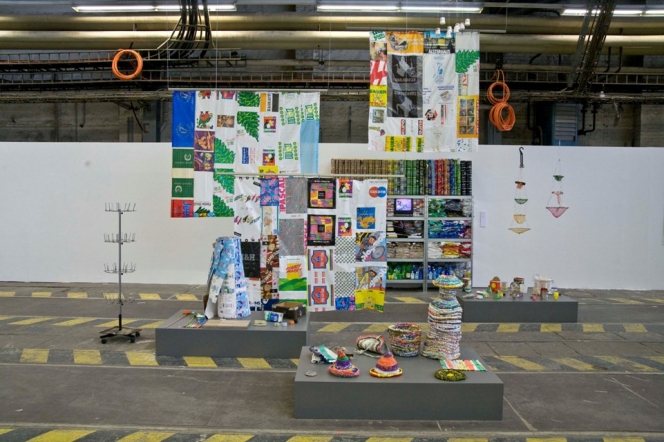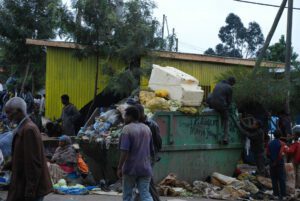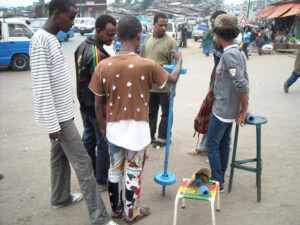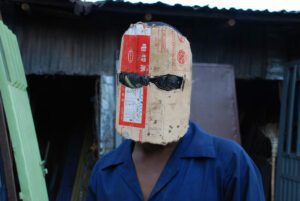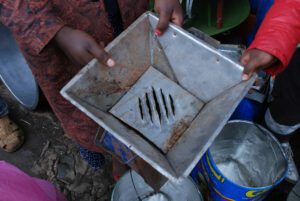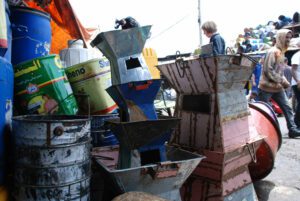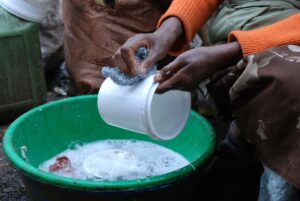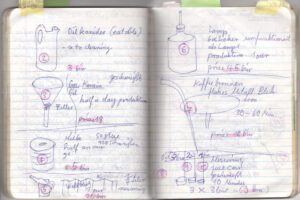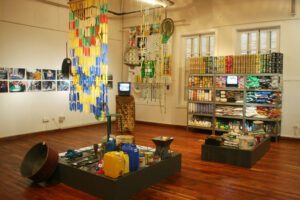
Nana Petzet
The SBF-System – Paralysed by the Recycling Paradise
Artistic research on rescycling in Addis Abeba
27. Mai – 6. Juni 2011
With the introduction of the Green Dot by the DSD (Duales System Deutschland) in 1992, the recycling of sales packaging was propagated as the solution of all waste disposal problems, even though for example in the sector of drinks packaging, there was already a well-functioning system of returnable and reusable bottles in place. The avoidance of waste and reuse systems took a backseat. The CPR system, my counter model, takes as a point of departure the term »valuable recyclable material « propagated by DSD. If the trash marked with a greed dot is really »valuable material« for which I have paid, then why should I nor recycle it myself and designate a new use for it? Our household was thus transformed into an experimental plant, a combination of trash collection point, recycling plant, and reuse company. During a six-month stay in Reykjavík (October 1997–April 1998), I conducted the experiment »living according to the CPR system« and collected all sales packaging in our four-person household, cleaned, stored and turned it into objects of daily use which I integrated into my household. At the end of the experiment, I invited people to view the apartment, and I documented the extensive trash collection in the attic, the numerous collection points in the kitchen, and the homemade household effects.
If we compare the environmental aspects, the CPR system is far superior to DSD. While the plastics recycling of DSD turns out to be a technically and energetically highly elaborate transformation of a high-value product into a product with considerably worse characteristics, the materials directly processed as part of the CPR system retains its high value in a quite sustainable process: minimal distribution distances, low energy use (apart from human labour, which does not play a role in eco-balances), hardly any toxic emissions, no noise.
Above all, the spread of the CPR system can contribute decisively to avoiding trash in the first place. Because once a household is equipped with several waste-bins made of plastic bags, wall carpets made of milk cartons, and soap dishes made of champagne corks, and all one’s relations and friends have been similarly equipped, the question of avoiding trash is once again raised with great urgency.
Alle Bilder Copyright Nana Petzet
Further Information
Nan Petzet in the exhibition Kunstverein Wolfsburg 2023: Saving – The Art of Saving and Preserving, 24/02-07/05/2023
On Nana Petzet’s website her article:“Paralyzed by the Recycling Paradise” – An artistic research on waste recycling in Addis Ababa, May 27 – June 6, 2011 and April 27 – May 9, 2012.

